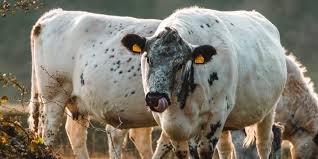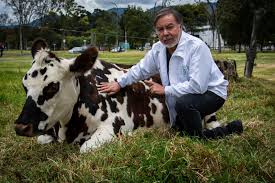This article explores the processes of fertilization and pregnancy in farm animals, focusing on the mechanisms involved, types of placentation, and the maintenance of pregnancy. Understanding these processes is crucial for effective breeding and livestock management.
Fertilization: The Fusion of Male and Female Gametes
1. Definition and Process of Fertilization
Fertilization is the fusion of male and female gametes to form a zygote. In farm animals, this typically occurs in the oviduct, where sperm meets the ovum. The process involves sperm capacitation and the acrosome reaction, enabling sperm to penetrate the egg’s protective layers.
2. Capacitation and Acrosome Reaction
Capacitation refers to the physiological changes sperm undergo to gain the ability to fertilize an egg. The acrosome reaction is the release of enzymes that allow sperm to penetrate the egg’s zona pellucida.
3. Syngamy: Fusion of Gametes
Syngamy is the fusion of male and female nuclei, combining their genetic material to form a single-cell zygote. This marks the beginning of embryonic development.
Read Also: Different Systems of Rearing Rabbits
Pregnancy: Development of the Embryo and Fetus

1. Embryonic Development and Implantation
After fertilization, the embryo undergoes cleavage, forming a morula and then a blastocyst. The blastocyst implants into the uterine wall, initiating pregnancy.
2. Placentation: Formation of the Placenta
Placentation is the development of the placenta, an organ that facilitates nutrient and gas exchange between the mother and fetus. Types of placentation include epitheliochorial, syndesmochorial, endotheliochorial, and hemochorial, varying among species.
3. Embryonic Layers and Organ Formation
During early differentiation, the germ disc forms three layers: ectoderm, mesoderm, and endoderm. These layers give rise to various organs and tissues in the developing fetus.
Read Also: Reasons to use Rabbit Poo (Manure) for our Soil and Crops
Maintenance of Pregnancy

1. Hormonal Support: Role of Progesterone
Progesterone is crucial for maintaining pregnancy. It supports the uterine lining and prevents contractions that could expel the fetus. In some species, the corpus luteum produces progesterone, while in others, the placenta takes over this function.
2. Maternal Recognition of Pregnancy
Maternal recognition involves signals from the embryo that prevent the regression of the corpus luteum, ensuring continued progesterone production and pregnancy maintenance.
Parturition: The Process of Giving Birth
1. Initiation of Parturition
Parturition begins with hormonal changes, including increased cortisol and prostaglandin levels, leading to uterine contractions and cervical dilation.
2. Stages of Parturition
Parturition occurs in three stages:
Stage 1: Cervical dilation and uterine contractions.
Stage 2: Delivery of the fetus.
Stage 3: Expulsion of the placenta.
These stages ensure the safe delivery of the offspring.
Postpartum Considerations
1. Uterine Involution
After birth, the uterus undergoes involution, returning to its non-pregnant state. This process involves the shedding of the uterine lining and reduction in uterine size.
2. Lochia Discharge
Postpartum discharge, known as lochia, consists of blood, mucus, and uterine tissue. Its presence is normal and decreases over time as the uterus heals.
Understanding fertilization, pregnancy, and parturition in farm animals is essential for effective livestock management. Proper knowledge of these processes ensures improved reproductive outcomes and overall herd health.
Do you have any questions, suggestions, or contributions? If so, please feel free to use the comment box below to share your thoughts. We also encourage you to kindly share this information with others who might benefit from it. Since we can’t reach everyone at once, we truly appreciate your help in spreading the word. Thank you so much for your support and for sharing!

